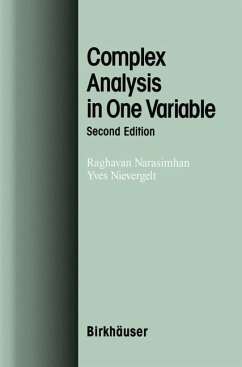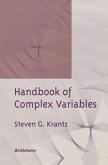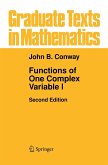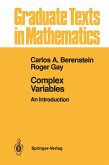The original edition of this book has been out of print for some years. The appear ance of the present second edition owes much to the initiative of Yves Nievergelt at Eastern Washington University, and the support of Ann Kostant, Mathematics Editor at Birkhauser. Since the book was first published, several people have remarked on the absence of exercises and expressed the opinion that the book would have been more useful had exercises been included. In 1997, Yves Nievergelt informed me that, for a decade, he had regularly taught a course at Eastern Washington based on the book, and that he had systematically compiled exercises for his course. He kindly put his work at my disposal. Thus, the present edition appears in two parts. The first is essentially just a reprint of the original edition. I have corrected the misprints of which I have become aware (including those pointed out to me by others), and have made a small number of other minor changes.
Hinweis: Dieser Artikel kann nur an eine deutsche Lieferadresse ausgeliefert werden.
Hinweis: Dieser Artikel kann nur an eine deutsche Lieferadresse ausgeliefert werden.
"The first part of the book under review represents essentially the material of R. Narasimhan's 'Complex analysis in one variable' (first edition, 1985). The second part of the book, authored by Y. Nievergelt, consists of exercises and relevant references.... There are notes at the end of each chapter which contain brief remarks on the history of the material presented as well as references to the literature. The exercises of part II give the reader the opportunity to consolidate his knowledge in complex analysis. At the end of this part there are notes for the exercises and references. The book can be highly recommended for a thorough study of complex analysis." -ZENTRALBLATT MATH (Review of the second edition) "The book introduces and makes use of concepts from many different areas of mathematics, especially ideas used in several complex variables and differential geometry. There is also a short...introductory chapter dealing with several complex variables.... The exercises in Part 2 vary from basic to advanced, and provide good practice for the concepts and techniques of the subject.... The choice of topics covered gives an excellent introduction to modern complex analysis. The exposition is well written. All in all, this book is a welcome addition to the list of books presenting a first course in complex analysis." -MATHEMATICAL REVIEWS (Review of the second edition) "Provides a smooth and unintimidating transition from classical complex analysis in the plane to modern abstract theory on manifolds... An excellent, carefully written and thematically rich book which does not overwhelm the reader... Well-suited as a textbook either for sophisticated beginners or as a sequel to a one-semester introductory course." -JAHRESBERICHT DER DMV (Review of the first edition)








